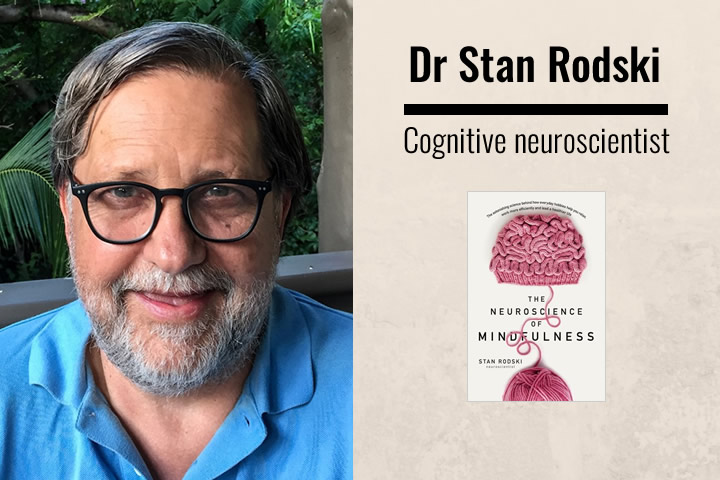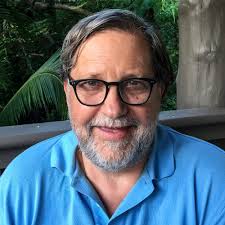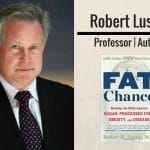
Watch the full interview below or listen to the full episode on your iPhone HERE.
Stu: This week I’m excited to welcome Dr. Stan Rodski. Dr. Rodski has worked as a psychologist for over 30 years specialising in Neuro Scientific research around the issues of stress and how best to deal with it in our personal, family, and work lives. In this episode, we talk about how neuroscience can help to address workplace burnout, where to start if you want to become more mindful, and how micro breaks could help revive our tired brains. Over to Dr. Rodski.
Audio Version

 Questions we ask in this episode:
Questions we ask in this episode:
-
What approach does Neuroscience offer to address workplace burnout?
-
What everyday practices could unknowingly / negatively impact our state of mind?
-
Where would we start if we want to become more mindful?
Get More of Dr. Stan Rodski
If you enjoyed this, then we think you’ll enjoy this interview:
- Dr Valdeane Brown PhD – Training the brain for more focus and clarity
- Tom Campbell: Nature Of Reality, Beating Fear & The Meaning Of Life
- James Doty: Into the Magic Shop – Harnessing the Power of the Brain & the Heart
Full Transcript
Stu:
00:00:03
Hey, this is Stu from 180 Nutrition and welcome to another episode of The Health Sessions. It’s here that we connect with the world’s best experts in health, wellness, and human performance in an attempt to cut through the confusion around what it actually takes to achieve a long lasting health. Now I’m sure that’s something that we all strive to have. I certainly do.
00:00:23
Before we get into the show today, you might not know that we make products too. That’s right. We’re into whole food nutrition and have a range of super foods and natural supplements to help support your day. If you are curious, what to find out more, just jump over to our website. That is 180nutrition.com.au and take a look. Okay. Back to the show.
00:00:44
This week I’m excited to welcome Dr. Stan Rodski. Dr. Rodski has worked as a psychologist for over 30 years specializing in neuro scientific research around the issues of stress and how best to deal with it in our personal, family, and work lives. In this episode, we talk about how neuroscience can help to address workplace burnout, where to start if you want to become more mindful, and how micro breaks could help revive our tired brains. Over to Dr. Rodski.
00:01:17
Hi guys, this is Stu from 180 Nutrition and I am delighted to welcome Dr. Stan Rodski to the podcast. Dr. Rodski, good morning. How are you?
Stan
00:01:27
I’m very well, thank you, and thanks for having me.
Stu
00:01:29
Thank you so much for sharing some of your time today. First up, before we get into some of the questions I’d love to ask you this morning, for all of our listeners that may not be familiar with you, I would just love it if you could just tell us a little bit about yourself, please.
Stan
00:01:44
Yeah, sure. Look, my background is psychology, mathematics, and neuroscience. So, in most of my life before the neuroscience caught up, which you can imagine that probably since I qualified back in the early 80s for up until maybe the mid 90s the only way we looked at a brain was with a x-ray, so you could imagine what happened to the world when scanners came in. PET, SPECT, movable machines now, you know, it’s the generation of the world into the neuro science. So that meant that probably until about the early 2000s, I worked mainly as a psychologist, cognitive psychologist, some would call a neuropsychologist. And for the last 10 years or so, my concentration has been in this neuroscience space. In particular, the peak performance space.
00:02:52
So when you shift from psychology to neuroscience what’s happening is that you’re moving into the ends of the spectrum. So we’re psychology operates, generally in the middle ground, the neuro stuff comes in because there’s major learning disorders and the brain is malfunctioning, or my brain is malfunctioning when I need to perform at my best, I can’t remember the names, I can’t remember what I’m doing. So, the neuro science and the ability for me to not be so reactive, but rather than proactive, is my background. So, that cognitive neuroscience. As I explained, I’m a plumber and electrician for the brain.
Stu
00:03:45
Oh, I love it. Fantastic.
Stan
00:03:47
Taps, fluids, and an electrical circuit board. That’s my world.
Stu
00:03:53
Excellent. Well then I am super, super keen to jump in and talk about then neuroscience and how that can help address workplace burnout. Because, as we were chatting just before we hit the record button, everybody these days is busy. That seems to be the default answer when we say, “How are you?”
00:04:15
“We’re busy.” We’ve got the internet, smartphone, and all of the plethora of distractions that that brings. And I remember before smartphones, before internet when the pace of life seemed to be a little bit slower, it seemed to be easier to manage, and now there’s no off switch. So, how does neuroscience help? Because, I can see lots of people burning out.
Stan
00:04:44
Absolutely. And I’m with you. I would literally leave my office and my clients in the early days, and the only way you could contact me was with my home phone landline, and I gave that up to no one. So your day was ended, and I totally agree that we live in a very different world, but I guess the more interesting question is always one of, well, perhaps we change the world, and I’ve got an answer for that. That’s not going to happen.
00:05:16
The answer is that the technologies that are banging into us, into this brain that was never biologically designed for this, we have adapted because of culture. We got language 50,000 years ago or thereabouts, that’s when God was invented and everything, we’ve culturally changed and manipulated our brain and developed our frontal lobe here. But its biological paths take a lot longer to change. So, here we are in this world in which, you know, in the last 10, even 20 years, if we go a bit longer, it’s just dramatically changed.
00:06:03
We’re only starting to see the consequences of that, probably with children who are enabled with these technologies earlier than most of us older ones have been, and that’s very interesting to start watching what’s happening with them. But at the end of the day, why cognitive neuroscience is very interesting here, away from the behavioural and the others, which have good things to do. I’m doing this, why is my brain doing … is different to how our brain is actually dealing with the world, particularly at its subconscious level. Because it’s an energy system.
00:06:41
The brain is an energy system. It needs the energy to turn the taps on and off, and it does those to release the fluids that keep us always in a state of, and here’s the Latin, so anyone with a doctorate always uses a little bit of Latin, just to ensure qualifications are in play. You know, is homeostasis. You see, we don’t wake up and in some sentience sense, our brain goes, “Okay, I feel like doing this and I feel like doing that,” and what have you. It wakes up, and the moment that wakes up it quickly checks its balancing system, it’s homeostasis. It quickly starts to then open the taps, close the taps, move the fluids, get the neurons going, get that oxygen and glucose together to fire up the neurons in particular pathways to get us to the toilet for example, and relieve our bladder or push our partner over because they’re snoring or you know.
00:07:51
But the key here for us going forward is the brain’s energy system. It’s trying to keep us in balance. So when we’re living in a world of burnout, we’re living in a world in which we are consciously burning more energy in our day then it can resolve with our unconscious system, which is keeping everything going. You know, your heart beating, your lungs going in out. You’re obviously excited to see me and you can see I’m delusional already. But I’m just saying it’s doing all of these things to keep us alive all day and operating as best it can, but some very insidious things have been going on for us, because our brain in that world of keeping us going … So as soon as you don’t have to think about the next question to me, and it just sorta moves into its normal play, it goes into its energy conserving mode, which is your autonomic nervous system, your automatic system, your subconscious system. It doesn’t want to use up any more energy than it has to.
Stan
00:09:08
Once you start to understand how that’s what its … it’s physics. It’s energy in movement, lots of energy, more energy, and off we go. And I know there’s all behavioral stuff and there’s all sorts of emotion and things we humans bring into play, but that’s its core.
Stu
00:09:30
So, if we understand then the physics and then understand that there are a whole heap of other factors then that contribute to the way that the energy system works, how can we master the energy system to our advantage?
Stan
00:09:45
Yes. And we can. Think of like a house with an automatic heating and cooling system. You know, our houses just sit to, in this case, for most humans, 23 degrees or, you know, and it makes us comfortable, but sometimes it’s colder and sometimes it’s hotter and we override it with our manual. It’s too cold, up the heat.
Stu
00:10:14
Press the button.
Stan
00:10:16
Yeah, press the button, and we override the system. We actually have to override it, because what happens now is we leave it in manual. We stay in manual. We stay on too long from the moment you woke up this morning, bang, I bet you looked at your phone and you look to see what messages had flown in there most. And each of those would have been, “Oh, I must turn that one off.” Bang, bang, bang. And you know, Oh, excitement, there’s Dr. Stan’s name, great day coming up. Again, the delusion. I’m qualified, but [inaudible 00:11:00].
00:11:00
But I’m just saying that we’re on in a way we’ve never been. Once we would have sort of meandered along and eventually got to add diary or maybe put a post it note on the middle of our foreheads. Don’t forget to do this, that now we’re on, and the problem for the brain is what we’ve understand in the neurobiology of it is this is not a good position for it, because once it starts to be on too long, just like the home heating system, it overcooks. It starts to then go, “Wait a minute.” The system set for here, and it’s got a system whereby when you overcook it can stop, and we stop. We can stop at very deeply biological sort of issues, like you wet yourself, to we can just forget a name, we can forget where we are, we can, you know, something that we normally do without fail suddenly fails, or we suddenly get a rash or pimples or you know.
00:12:10
Our body in its own way, a mind body connection, which is now so researched, so scientifically validated. I don’t have to have a debate about this like I did 20 years ago. Today that is just accepted, and understanding it is understanding the brain, it’s neurons, it’s connections, it’s pushing the adrenaline neurons to release the cortisols, the cortisol’s exciting the system, dilating the pupils, filling your muscles with blood, getting you ready for action, reaction, whatever it might be, and then dissipate, right with the dopamine coming in, same effect as that plant you grow in your backyard for medicinal purposes.
Stu
00:13:05
You talking about camomile?
Stan
00:13:07
That might be. It has a street name, I think, which is the front of the dopamine word, which works quite well. But the system is set to do that. It’s set to bang in, bang out. But we’re now banging and staying, and that’s the issue for us. That’s the issue where what we now know with the mind, body connection, for example, is when the cortisol stays in, it actually, and this is … neuroscience is such a slither of time. It’s so minute, what’s been going on. In the last five years we’ve discovered these amyloid proteins. These are matter, they build up in your arteries, in the heart muscles, in your brain muscles and the blood flows around there, and they literally become, with enough of that left in there it eventually blocks the system. Aneurism, heart attack.
00:14:18
There it is. There is the mind. I can remember my colleagues when we were all young doctoral students working in a brain rehab center down in Melbourne, two of them were in my team, that we used to always, the big debate was, but how can something in your mind affect something in you physically? How is that possible? That’s it. That was the discovery. There’s the Nobel prize. That’s the biggie. The brain, the mind, not necessarily perceiving a real danger, but any danger. Just the thought of it in your head that World War III is coming or the contagion to the kill the planet or whatever it might be, would actually create these proteins from the cortisols. So here we now have a world where the science of medicine is unbelievable in the way it’s keeping us alive, but is not keeping our brain alive.
00:15:25
We are living longer, but our brains are dying faster.
Stu
00:15:29
Yeah. That’s the worry.
Stan
00:15:31
Talk about burnout.
Stu
00:15:31
Yes, absolutely right.
Stan
00:15:31
[crosstalk 00:15:31] markers along the way.
Stu
00:15:38
I’ve read lots about sleep being so important for the clearing of the amyloid plaque that builds up through, is it the glymphatic system, and sleep can often be so disrupted by, I guess, dysregulation in hormones and the continual staring at our smartphones and devices and giving ourselves jet lag before we go to sleep. So, what’s the answer? Where do we start, given the fact that none of this stuff’s going away? It’s only going to get worse.
Stan
00:16:11
We’ll come back to sleep, because in the neurology world, in the neuroscience world, the whole issue of sleep is such an amazingly big area. And again, we’ll talk about it later because it’s the next book. So, for obvious reasons and all of these prices, but the way we actually have to use our resources and [inaudible 00:16:38] now to understand this physics, if you like, this neuro biology that goes on in the brain in a world in which …
Stan
00:16:48
Look, you and I could kid ourselves, we could sell flagellate until we go to the moon here over stopping the world, changing the disruptors, changing the Uber’s and everyone else that’s working in AI, which is a world I work in as well, and machine learning. And this world is making us busier, not less so. It’s making us more cerebral than anything else. It’s attacking that organ more than anything else. Sure, we don’t have to do that much physically, but we do need to do it in our brain. So we need to actually change that mechanism. And that’s what the approach has been for me, bringing, you know, sort of talking about the neuroscience of a thing like mindfulness, which is a good topic. It’s about that, but in its essence, it’s all about breaking that cortisol cycle. Bringing yourself back in.
00:17:54
One of the things, if I can bring a prop in for a moment. [crosstalk 00:17:59]
Stu
00:17:58
A snow globe. Yeah.
Stan
00:17:59
Yeah. Look, we need our brain at least twice a day to resemble that. But you know what we do all day?
Stu
00:18:11
Absolutely. Right. We shake, shake, shake, shake.
Stan
00:18:14
[crosstalk 00:18:14] And there it is, and that’s exactly what’s going to … And it never has a moment. It’s just starting to rest now, and another messy thing, another thing to do. Even when we go on holidays, we actually start the rest a little bit, then we think, “No one’s called me. Oh, what’s going on back at work? What should I be doing? Yeah. It’s a great example.
00:18:40
We actually have to train ourselves now. We don’t have enough time in neuro biological evolution to change our brain in that automatic setting to do, you know, our world has just got hot. We actually have to accept that 23 is our preferred, but we’re going to have to do some adjusting of the temperature in this house ourselves. We can’t forget about it. We can’t just let it do its own job here. That’s what I’ve been focusing on. How can we use these pieces of neuro science to actually enable us to break the things that the brain actually lives off, and turn it to our advantage.
Stu
00:19:36
Fantastic. So your book then, the neuroscience of mindfulness, which is one of the key reasons why I reached out, because a friend of mine said, “Boy, you’ve got to read this book. I absolutely love it. It’s a game changer.” So, I’m super keen. And I fess up, I haven’t read it. I’ve got one on order. It’s coming, but the powers that be a slow to deliver.
Stan
00:20:04
What’s wrong with them?
Stu
00:20:05
Yeah. Brilliant. So for anybody that’s not looking, so yeah, just can see the cover there. So what can we expect from the book? And just guide us through perhaps some of the key principles that are going to help us get out of this kind of crazed snow globe state.
Stan
00:20:23
Well, first we accept it for what it is, right? That we’re going to be busy in this world, but we can actually actively do something about remembering. The analogy I like is, I mean, I’m up to grandchildren now, not my own children, but my analogy is the bathwater after the kids have been in it. And if you get rid of the bath water straight away, mainly because you have to get rid of the water, but you know if you leave it, you leave a ring on the bathroom. Well, think of the brain like that. You label
00:21:00
…. all this activity in too long and it leaves this ring. Okay. It’ll eventually empty and you’ll feel reasonably okay, but you know what, there’s the ring. We have to actually make sure we move that water out quickly and as frequently as we can. I mentioned this in the book. You’ve got to get it … you’ve got to actually stop. Let your brain completely move to a snowless dome at least twice a day.
Stu
00:21:35
How would we do that?
Stan
00:21:38
Now, and the way that we would do that is one of the techniques that I talk about in the book of course, are micro breaks.
Stu
00:21:46
Yes.
Stan
00:21:47
Yeah?
Stu
00:21:47
Yup.
Stan
00:21:49
A micro break takes advantage of another piece of science in here. Since about 2000, a lot of us have started to work with a concept called HRV. That’s heart rate variation. That is when the heart beats 60 beats per minute. We just assume 60 beats per minute, but the fact of the matter is there are some very different 60 beats per minute. Your part could be bleeding equally distant, each beat is equally distant between there, making up the average of 60.
Stu
00:22:31
Yes.
Stan
00:22:31
When it is like that, you are in stress mode.
Stu
00:22:35
Yeah. Yup.
Stan
00:22:37
Your system is alert. It is fired up. It’s using all of its energy. It expects to have to do something mentally or physically regardless of the fact that you might be pushed up to 80 or down to 40 or wherever you are in your heartbeats, the variation, if your variation goes up in there, that’s when you relax. Your autonomic nervous system, your subconscious system is actually pushing and pulling, pushing and pulling.
00:23:11
It’s the sympathetic system, the parasympathetic system, for your science geeks, lovely Year 10 biology. I wondered whether I’d ever read or hear about that again, there it is.
Stu
00:23:23
There it is, [inaudible 00:23:24].
Stan
00:23:24
Your biology teacher told you about the central nervous system, the autonomic nervous system and the sympathetic and parasympathetic nervous system, there you go. All of that pain is now being paid for. You now need that because that push, the sympathetic; that pull, the parasympathetic, we need to actually make sure it jumps out of this, you know, like equally distant pushing and pulling. We need to push a little bit and pull back a lot more. Push a little bit, pull back a little bit more.
00:23:54
But this is all going on in micro seconds. What we discovered was that one of the things we’ve all known about, heard about, tried, done. Breathing.
Stu
00:24:09
Right?
Stan
00:24:09
Because you know what? Our brain actually, that is the only organ in our body that our brain can actually change its motion. Right now, I want you, anyone listening to me right now, to stop breathing. Just stop. Don’t breathe in. Just stop. So there’s mental function. You’ve stopped your lungs. Now I want you to blow out. Empty them til they’re flat as pancake. Now breath in through your nose. Nice and deep. Hold one, two, three and now slowly and longer breathe out through the mouth. Empty them, empty them, empty them, empty them, empty them, empty them. Now once they’re flat, in again, nice, sharp. Hold, and now longer out. Here we go. Out, out, out through the mouth, out, longer, longer, longer, and going through the micro break exercise and then out. In again. Hold one, two, three, and out through the mouth longer, longer, longer, until they’re flat. Now, back to me.
Stu
00:25:26
Fantastic.
Stan
00:25:27
Let me tell you, your brain has now gone back to controlling your lungs. Your brain can’t tell you to sweat. Go on, tell your sweat glands to sweat now. Go on.
Stu
00:25:39
Can’t do it.
Stan
00:25:39
Can’t do it.
Stu
00:25:42
Can’t do it.
Stan
00:25:43
[inaudible 00:25:43] now evolutionary process, this frontal lobe of ours connected up to override the heating system. Remember my [crosstalk 00:25:53]. There’s our sweat.
Stu
00:25:56
This is great.
Stan
00:25:58
There’s our sweat in which we can actually get the heart rate variation system, which our brain is got itself locked into. I’ve been busy all day. You know, I’m at sea, you know, my brain, my heart’s okay, beating away at 60 or 80 or whatever it is, but it’s a variation. And as soon as I create that variation, I’m actually whacking the cortisol out of my system. I have stimulated the dopamine into my system. I’ve now got the serotonins and all of the relaxants coming into my system.
Stu
00:26:35
Fantastic. This is a game changer. Now I do track my HIV, so I wear an aura ring and that just …
Stan:
00:26:45
There it is, yeah.
Stu
00:26:45
That just tracks me and every day I have a look at my sleep quality and I look at my HRV score and think, how can I get that high? Because I’ve got lots of demands on the business, but I love what you’re telling me. Si how often, how many times a day, what do I do with the breathing technique?
Stan
00:27:06
At least twice a day, and also in critical moments. So for example, you should, if you can, because remember the brain won’t expend energy on anything it doesn’t think it’s important and most of the things you expend your energy on are habitual. You know, it’s part of its own [inaudible 00:27:24] system. So to override it and actually think to do, you know, you’re busy all day from the moment you got up. You know, after you finish with me, you’ve got 5 million other things to do and maybe a couple more of these along the way. Before you know it, you’re through lunch, you’re eating at your desk, and you’re reading the articles that you need to read because there’s someone you’re trying to line up in a month or whatever it is.
Stu
00:27:48
Yeah, yeah.
Stan
00:27:48
You need to firstly just put into your system some way a little reminder to go micro break. Once in the morning, once in the afternoon. How long did that take?
Stu
00:28:01
Oh, seconds.
Stan
00:28:02
Seconds.
Stu
00:28:04
How many breaths would we need to, would be optimal?
Stan
00:28:06
Those three. Those three are perfect. That’s a micro break. But also then think about, you know, you don’t have to be so demonstrative with the breathing. You could be sitting at your desk, you could be just outside the meeting room, you’re about to have your performance evaluation with your boss or you’re the boss about to do a performance evaluation with you. And you know what, most of the sort of workplace people I work with, they go, you know, by the time I get through, you know, I’ve had meeting after meeting after meeting after meeting, but this meeting here is a biggie. You know, I’ve got to really have this deep important conversation with this person.
00:28:47
Those managers will often say to me, “You know what? The meeting was half an hour. I was 5 minutes to 10 minutes late into it, and you know what, I only got to the topic that I wanted to talk to this person in the last three minutes.”
00:29:02
And that will mean for anyone who’s a manager out there and worked in this scenario, they will relate to that. Because what happened was it took them that long to get into the moment to deal with and remember all of the things that they wanted to talk about without sounding like someone just banging in like a bull in a china shop. But had they done a micro break, just sat there for a moment. Thought for a moment, I’m going to change my pattern of breathing here. I’m going to increase my HRV, and I’m just going to blow it, I’m just sitting. You could be with other people who are in that meeting and you just quietly blow out …
Stu
00:29:41
Love it.
Stan
00:29:43
And then make sure it’s lengthier out. Do it three times, and you watch …
Stu
00:29:47
Love it. This …
Stan
00:29:49
… how your system will change. And if you’ve done it twice a day, you’re making sure the bathwater has been flushed out of the system at least twice a day.
Stu
00:29:59
Boy, oh boy. This is so good, and the reason why it’s so good-
Stan
00:30:03
It’s in the book.
Stu
00:30:03
… is because it’s backed by science. Like this isn’t woo woo.
Stan
00:30:06
There’s the science.
Stu
00:30:07
Yeah.
Stan
00:30:08
There is that science.
Stu
00:30:10
Fantastic. And you know what? It will actually give the smart phone, which actually is a dumb phone, a use. So I can set some times now just to say “Look, hey, you might want to breathe.” Fantastic. Boy, oh boy. This probably could be one of the most important piece of information I think we could probably attach ourselves to in any given day because we are so burnt out, tired and wired, all of the above. Fantastic.
Stan
00:30:38
And the mindfulness piece is part of that. So the mindfulness piece is … you know, we’re talking meditation, relaxation, yoga. All of the gurus that come out of India and Asia. In my book, I talk about Ainslie Meares who was a psychiatrist who operated in Australia. He was ahead of his time, but they didn’t have the science. You know, they, we could all see the benefits of relaxing, meditating, yoga, but the science, you know, but I don’t get that … you know, where does it jump into actually affecting, you know, show me how that works. Well, that’s happened now.
Stu
00:31:23
Yes, yeah.
Stan
00:31:26
The mindfulness revolution is all about that. Trying to get this snowball to there. To be, you know, move from that shaky space into that wonderful place where you’re really just in the moment. If you look closely at mindfulness, that’s what it’s about. Even, I mean, even a thing like a shower. You know, a lot of people will say to me, “You know, I go in the shower and I get all those ideas. It’s wonderful, the [inaudible 00:32:00],” and I say, “Well, you know what, I actually use the shower as my first point of using mindfulness.” You know, I like to get in the shower and I like to feel the water. I like to sense where I am. I like to sense what I’m washing. You know, I keep my mind on me in that moment. Not, “Oh, I’ve got, this is the answer to some of Stuart’s questions for later this morning. Oh maybe I’ll bring that in,” and oh, and then my mind jumps to something else and this wonderful tactile environment that I’m in is suddenly, my brain is now so busy.
Stu
00:32:40
Yeah, yeah. You’re right.
Stan
00:32:43
But I put it to end the other way, you know? You can do that with washing your teeth, you can just take a minute to watch it, you know, think about exactly what you’re doing. Think about putting the paste on, think about looking at the brush, think about putting it in your … think about all of the mechanisms and processes that are going on. That’s so important for me in mindfulness and in the research, it’s good research but you know what? It’s tough for a lot of people to do. Because because I think in terms of, “Well look, I’m busy, I’ve got to be doing this. I don’t remember remember to do it.”
00:33:27
It was actually, and I talk about this in the book. A lot of people can’t just stop. Like, “I’m going to stop now.” That 60 seconds or two minutes of going through breaths, “Okay, I’ll do that.” But actually sitting there for 5 minutes or 10 minutes, closing their eyes, bringing themselves into some mantra with some focus in their brain.
00:33:55
Every executive I’ve ever seen … I worked in a very busy executive health practice for 15 years. Every executive that was referred to me would do it for, you know, because of the power of me and need to … you know, you’re going to come back and … but you know what, it would never last. “It’s the middle of the day. I need to be busy.”
00:34:20
One day, I had a young lady and I talk about her and she was really very, very poor in her mental health. All sorts of phobias, anxieties, she’d been through every psychiatrist, all the medication, wanted to turn to the neuroscience. We were able to sort of get some biotech onto an EEG, which, you know, I pop that on there and we went through, “Oh, I’ve done the relaxation before,” you know. Then I said, okay, I’ll tell you what. Let me tell you the brain loves repetition because it creates pattern, and because those repetitions and patterns then create something unique, creative, which particularly if there’s a sense of control around it, then it actually relaxes. So I thought, well, we’ll test this.
00:35:17
She did the usual thing. She’s very dark place, she used lots of dark colors, but she focused. Her eyes were open and she started coloring. [inaudible 00:35:27] this is the [inaudible 00:35:28] that I was telling you about …
Stu
00:35:31
Yes, so absolutely, so I want …
Stan
00:35:34
Just to show you patterns.
Stu
00:35:36
Right.
Stan
00:35:38
These are patterns. The reason for that is … or they will be patterns when you put some repeating colors into them. The colors you use and where you go creates the creativity the brain loves and you stay between the line giving you the controls.
00:35:58
I just watched this young lady’s EEG and her HRV just go … you know, the HRV improved and the brainwaves into the zone.
Stu
00:36:12
Wow.
Stan
00:36:13
Isn’t that interesting? Mindfulness with your eyes open.
Stu
00:36:17
Yeah. Because that’s the thing-
Stan
00:36:19
There’s a concept, isn’t it?
Stu
00:36:20
Absolutely, and there is a barrier to so many mindfulness practices today, specifically meditation because A, it takes time. B, everybody thinks they just suck at meditation, myself included.
Stan
00:36:36
I don’t know what happened. I don’t know what happened.
Stu
00:36:38
That’s right.
Stan
00:36:39
Am I better now? Did I really get something from that? But if I know I can actually task myself, because it’s … you know, we’re all, we’re awake. I believe in the nap. I personally, you know, 20-minute nap, wow. But if I’m not fatigued, it’s annoying for me. You know, you haven’t slept last night or you’ve been on planes and you’ve been running around all day and you’re tired, you’re fatigued, nap is fantastic. But if you’re not fatigued, then this sort of idea with your eyes open, just sort of being able to create a pattern. You don’t have to finish that because if the brain spots competition … did I meditate better than you? Did you get something more than me out of that? What should I have got out of that?
00:37:33
It’s so quick, because it’s evaluating whether it wants to do this or not.
Stu
00:37:38
Right. That’s fascinating. So for everybody that couldn’t see the video, so you held up as like an adult coloring book, essentially.
Stan
00:37:48
Yes.
Stu
00:37:48
And would that be something then that you would build into your perhaps evening routine? Like spend half an hour to an hour just relaxing, listen to a bit of music, and just color away?
Stan
00:38:03
Correct. And look, and many do. If you line it up with sleep, because remember, most of us … look, there are a lot of people who have sleep, as in chronic issues. But for most of us it’s acute issues. It’s, I’m just a bad sleeper. I sleep and tonight it was particularly bad. But I’m certainly not lying with my, you know, there’s another group which are lying with their eyes open all night, not sleeping for days. But for most of us, it’s just getting enough sleep.
00:38:45
If you look at the neuroscience of that in the context of neurobiology, in the context of these pipes and taps, when we go to sleep, the [inaudible 00:38:58] needs to be turned down.
Stu
00:39:00
Right. Yes.
Stan
00:39:03
We need to mix the chemicals. We need to mix the chemicals into a different grouping. If you go to bed and you’re wired, you know, you’ve just been on a big call and it’s got lots of things racing through your head. Well brain wave speeds are what we call beta. There could be 35 cycles versus what you really want to be just before sleep is about 15. And then when you get into deep sleep, you go down into the five and even deeper into the zeros. You know, not quite zero but around the one where we untangle all the glial cells around that in






